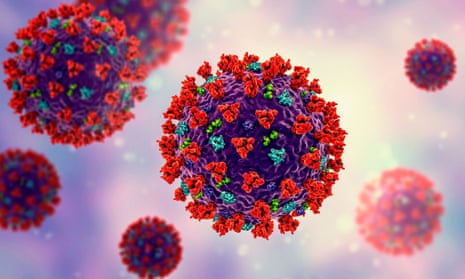Almost 5 million people in the UK are now believed to have Covid-19, it was estimated last week – an all-time high figure for the disease which first struck the nation two years ago. Hospital admissions and deaths are also rising but not nearly so sharply, scientists added.
This sharp jump in case numbers is being driven by the virus variant BA.2 which is even more transmissible than the original Omicron version that swept the UK at the beginning of the year.
The latest wave comes just as the government has ended free testing for the virus and as the nation prepares to enjoy its Easter holidays. This prospect raises the fear that further increases in case numbers, followed by rises in hospital admissions and deaths, could afflict the UK.
But as other researchers have pointed out, spring has arrived and warmer weather will allow more and more people to mix out of doors where they are less likely to infect each other. The outcome is unclear, in short. So what is the likely trajectory of the disease for the rest of the year? And what key measures should be taken now to limit the spread of Covid-19?
Should mask-wearing regulations remain strict?
“I don’t think so, unless you are someone who is particularly vulnerable,” says Professor Paul Hunter, of the University of East Anglia. “The latest ONS characteristics survey doesn’t find much benefit of mask wearing any more – though that does not mean masks don’t work. It is probably just that people who haven’t been wearing masks are more likely to have had the infection already and so are less susceptible.”
This point was backed by Professor Rowland Kao, of Edinburgh University. “With all other restrictions pretty much removed, we have very little evidence that cloth masks, such as commonly worn, have much effectiveness against Omicron, due to its higher transmissibility.”
However, the vaccine expert Peter English argues that mask-wearing still has an important role to play in limiting the spread of Covid. “Masks are particular effective for source control – at preventing an infectious person from infecting others. And there are people who remain at high risk from Covid-19. They cannot protect themselves as well as they need to by wearing a mask themselves. They rely on others to protect them by masking up in enclosed public spaces.”
Can we expect UK infections to peak soon?
Yes, says Professor Sheila Bird, of Cambridge University. “With respect to Omicron BA.2, it will probably peak in the next couple of weeks in England and Wales to be followed in two to three weeks in terms of consequent Covid-mentioned deaths.”
In fact, infections may have peaked already, says Hunter. “My best guess is that they peaked around 21 March, but given that the ONS survey is a prevalence survey and always published a week behind we should not expect to see falling ONS estimates until next week at the earliest and probably not until the following Friday,” he added.
However, the picture is likely to be confusing, added Kao. “As testing goes down and surveillance is slowed or stopped, it will become very difficult to tell for sure.”
Are we likely to get a Covid-free summer?
No, says virologist Julian Tang, of Leicester University. “Covid-19 will persist through summer and into autumn – it has not become fully seasonal yet, unlike flu, which does disappear almost completely throughout spring and summer.”
The seasonal behaviour of flu also contrasts with those common colds that are caused by coronaviruses and which persist all year round – albeit at relatively low levels – but with peaks in autumn and winter, he added.
This point was backed by Hunter. “Even in the absence of a new variant, I suspect we will continue to see infections at a rate of a few tens of thousands a day, but most won’t be diagnosed and recorded.
“We are only diagnosing about one in seven to one in eight new infections now and this may drop. However the rate of hospitalisations per infection is lower than at any time and does seem to be continuing to fall, so hopefully we won’t see many Covid-19 hospitalisations during summer.”
Kao also warned that infection numbers were also likely to remain high. “We have to remember that for the bulk of people vaccinated last autumn, there will be a substantial drop in immune protection unless all adults are offered boosters. This combination means that it is likely that there will remain considerable Omicron infection circulating, though we still expect the overall level to drop compared to now.”
What direction should vaccine development take to protect us against future rises in cases and new variants?
A range of improvements in vaccines was highlighted by English, who pinpointed several key areas where efforts should be directed. “Current vaccines are very effective at preventing serious illness but if we are to prevent transmission, we need vaccines which are more effective at preventing transmission. Ideally, we would also have vaccines which induce longer-lasting immunity,” he told the Observer.
In addition, it would be helpful to develop new methods of vaccine administration such as nasal sprays and vaccines that have been updated to match circulating variants as well as Covid-19 vaccines which can be given in combination with flu vaccines.
“We may well require an annual vaccination against Covid-19 due to waning immunity – just as we do for influenza. It would make a lot of sense to combine the two in a single annual jab,” added English.
